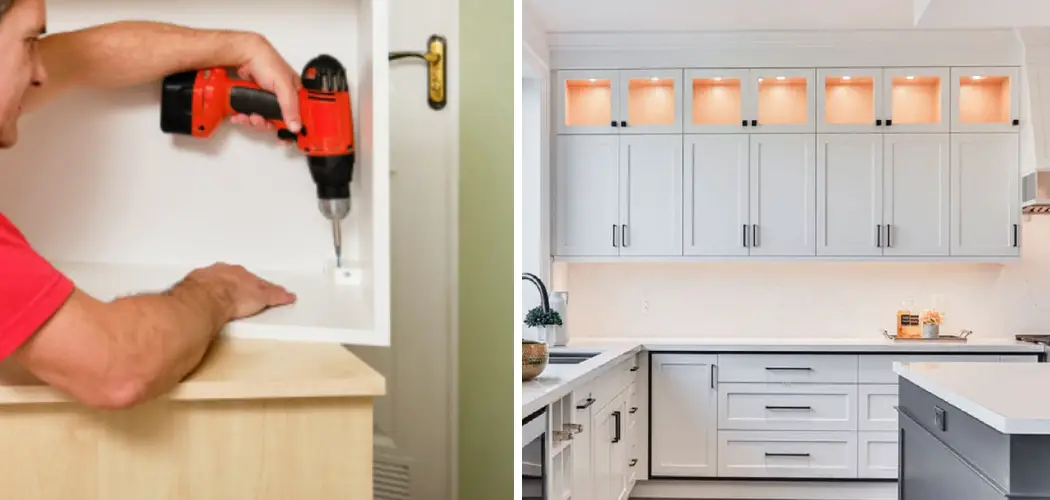Need to hang cabinets without the benefit of wall studs? You’re not alone. With pre-drilled walls becoming more common in modern homes, many homeowners face the challenge of how to securely hang heavy cabinetry without the use of traditional screws and nails.
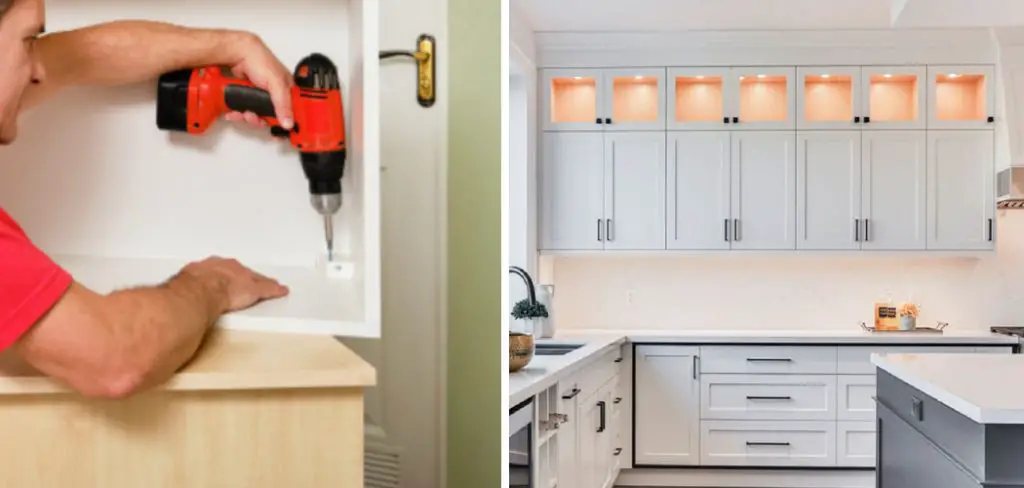
If this sounds like something you’re faced with, don’t worry—there are several tried-and-true methods for hanging your cabinetry that will provide a sturdy hold despite missing studs or other imperfections in your walls.
In today’s blog post on how to hang cabinets without studs, we’ll cover all the details you need to know about successfully mounting kitchen, bathroom, and other types of cabinetry without having access to wall studs. Read on for professional tips and tricks from our experts!
Needed Materials
Given the potential weight of your cabinetry, it is important to ensure you have all the necessary materials for a safe and secure installation. Here are some items you should have on hand before beginning the hanging process:
Cabinet Brackets or French Cleats
These will be used to anchor your cabinets securely to the wall.
Wall Anchors
If your walls are made of drywall or plaster, you’ll need to use wall anchors to get a secure hold. These will help distribute the weight of the cabinets more evenly across the wall.
Level
A level is an essential tool for ensuring your cabinets are straight and evenly aligned.
Drill and Masonry Bit
If you have masonry walls, you’ll need a drill and masonry bit to make holes for anchors.
Screws
Stainless steel or other heavy-duty screws will be needed to attach your brackets to the cabinet and wall anchors.
11 Step-by-step Guidelines on How to Hang Cabinets Without Studs
Step 1: Measure and Mark Your Wall
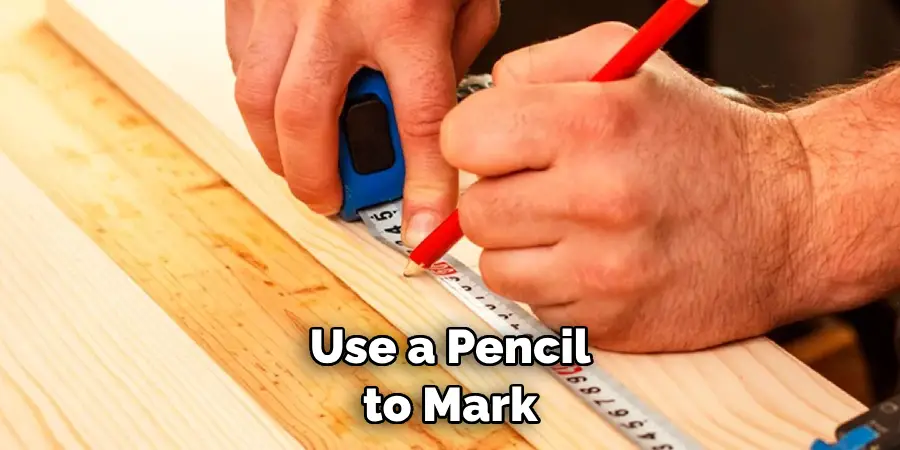
Measure the area where you want to hang your cabinets, making sure to account for any baseboards or other obstructions. Use a pencil to mark the locations of the top corners of each cabinet based on these measurements.
If you have multiple cabinets, make sure to leave at least a 1-2 inch gap between them. It is important to ensure there is no overlap between cabinets, as this could cause them to become unstable. But, don’t worry about making the marks perfect—they will be covered up by the cabinets themselves.
Step 2: Find Your Wall Studs
With an electronic stud finder, locate the nearest wall studs to your marked locations. If you’re lucky enough to find one close by, use it as a point of reference for where you’ll need to drill your anchor hole(s).
You can also try knocking on the wall to listen for a hollow sound, which will indicate the presence of a stud. But, keep in mind that this method is not always accurate. This step is important because it will help you determine where to place your brackets or French cleats. You want them to be as close to the studs as possible.
Step 3: Measure and Mark the Cabinets
Measure the back of your cabinet to find its center point. Use this measurement to mark the center point on the top back edge of your cabinet. Next, measure the distance between your top corner marks and transfer those measurements onto your cabinet’s center point.
It is important to make sure your brackets or cleats are level with the top of the cabinet. This will ensure the cabinet hangs evenly on your wall. It is recommended to use two brackets or cleats per cabinet for added stability. If your cabinets are on the heavier side, consider using three.
Step 4: Drill Holes for Brackets
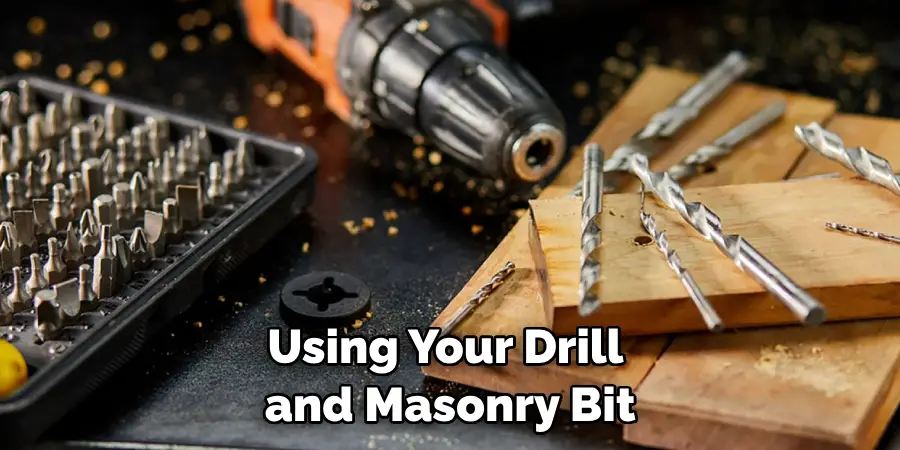
Using your drill and masonry bit, make holes in the back of your cabinet where you placed your transfer marks. The size of the bit should match that of the screws you’ll be using to attach the brackets.
It is recommended to drill slightly deeper than the length of your screws to ensure a secure hold. You can also use a spade bit to make larger holes for French cleats, if necessary. But, make sure they are still flush with the back of your cabinet so it can hang properly.
Step 5: Place Wall Anchors
If necessary, insert wall anchor(s) into each hole drilled in step four. Make sure they are flush with the wall surface. But, if your wall is made of wood or other sturdy materials, you may not need anchors. Although, it is still recommended to use them for added stability.
It is also important to note that the type and number of anchors used will depend on the weight of your cabinet. You may need heavier-duty anchors for heavier cabinets. But, in general, it is recommended to use at least two anchors per bracket. This will help distribute the weight of your cabinet more evenly across your wall.
Step 6: Attach Brackets to Cabinet
Using your screws, attach the brackets to the back of your cabinet where you made your holes. Make sure they are tightly secured. But, be careful not to overtighten as this could cause damage to your cabinet.
Otherwise, you risk compromising the strength of your anchors. You can also use a level at this stage to ensure your brackets are aligned properly. It is important to make sure your brackets are completely flat against the back of the cabinet for a secure hold. Although, if your cabinet is on the smaller side, you can also use L-brackets instead of regular brackets.
Step 7: Measure and Mark Mounting Locations on the Wall
Measure and mark the center point for each bracket location on your wall. It is important to ensure these marks are level with each other. This will ensure the cabinet hangs evenly on your wall. By measuring from the floor up to your marks, you can also ensure that all of your cabinets will be properly aligned with each other.
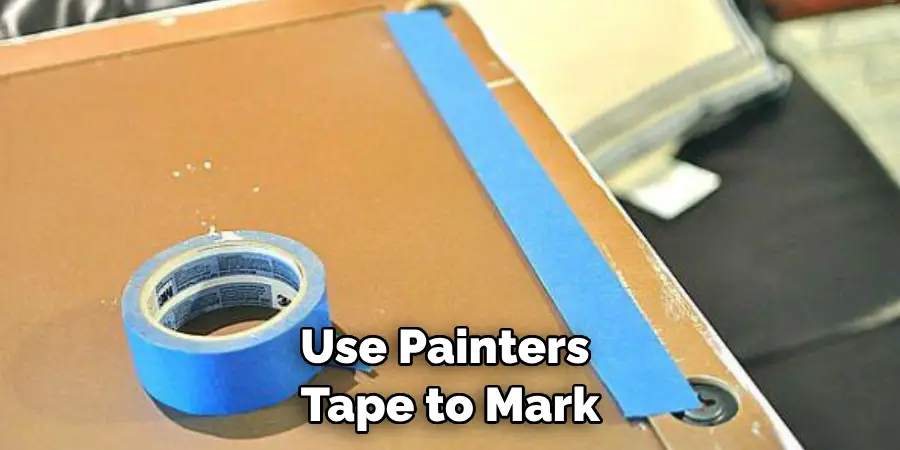
It is recommended to use a level at this stage for accuracy. You can also use a T-square to ensure your marks are perfectly aligned. You can also use painter’s tape to mark the bottom edge of each bracket location. This will help you see where to put your brackets before making any holes in the wall.
Step 8: Drill Holes for Wall Anchors
Using your drill and masonry bit, make holes in the wall where you have marked your bracket locations. If you don’t have a stud at this point, it is important to use anchors to support the weight of the cabinet. This is why it is crucial to mark and align your bracket locations properly. It is recommended to drill slightly deeper than the length of your screws to ensure a secure hold. You can also use a vacuum to clean out the holes after drilling.
Step 9: Insert Wall Anchors
Insert wall anchor(s) into each hole drilled in the previous step. Make sure they are flush with the wall surface. Then, remove the bracket(s) and set them aside for the next step. If you have not already done so, make sure to measure the weight of your cabinet so you can choose the appropriate anchors for added stability. It is also important to note that each anchor should be spaced a few inches apart from each other.
Step 10: Attach Cabinet to Wall
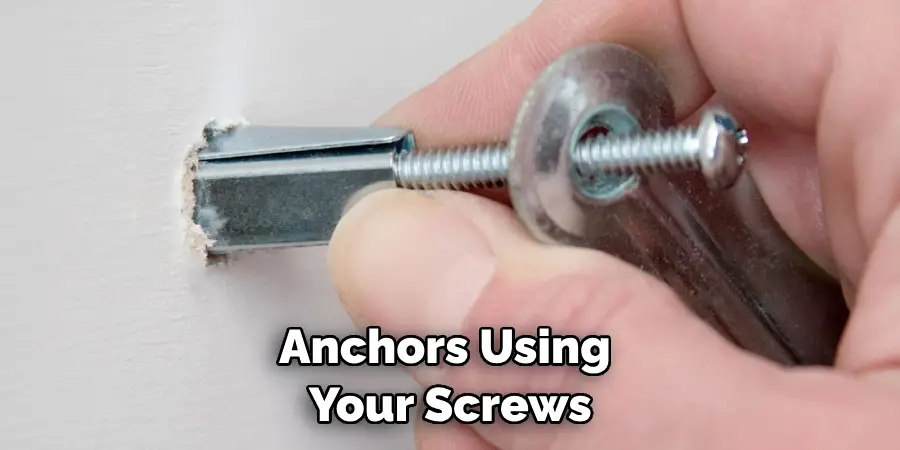
With a helper, lift and hold the cabinet in place while you secure it to the wall by attaching the bracket(s) to the anchors using your screws. it is important to make sure the cabinet hangs securely and is level before tightening the screws. If your cabinet has multiple brackets, repeat this step for each one. You can also use a level at this stage to ensure your cabinet is straight and properly aligned.
However, if you have a French cleat instead of brackets, follow the manufacturer’s instructions for attaching it to the back of your cabinet and then hanging it on the wall. And, if you have multiple cabinets, simply repeat these steps for each one. Now sit back and admire your beautiful new cabinet display!
Step 11: Check for Level
Using a level, double-check that your cabinet is straight and properly aligned. Make any necessary adjustments by slightly loosening the screws and repositioning as needed. Otherwise, you risk your cabinet being crooked and possibly causing damage to the wall or cabinet. Once you are satisfied with the positioning, tighten the screws securely.
Congratulations, you have successfully hung your cabinets without studs! Keep in mind that it is important to regularly check for any signs of wear and tear over time and make necessary adjustments as needed. With proper care and maintenance, your cabinets should stay securely mounted for years to come.
Following these steps on how to hang cabinets without studs, you should now have successfully hung your cabinets without the use of wall studs. Keep in mind that it is always a good idea to consult with a professional or seek advice from an experienced DIYer before attempting any major home improvement project.
Do You Need to Get Support From a Professional?
If you’re not confident in your ability to hang cabinets without studs, or if you have a particularly large and heavy cabinet, it may be best to seek the help of a professional contractor.

They have the experience and tools needed to ensure a secure installation that will last for years to come. However, with the right materials and careful attention to detail, hanging cabinets without studs is a DIY project that many homeowners can successfully tackle on their own. So don’t be afraid to take on the challenge and give your home a fresh new look!
Frequently Asked Questions
Q1: Can I Use Toggle Bolts Instead of Wall Anchors?
A1: Yes, toggle bolts can be used in place of wall anchors for a secure hold on drywall or plaster walls. It is important to ensure the toggles are rated for the weight of your cabinetry. You may also need to drill larger holes to accommodate the toggle bolts.
Q2: What is a French Cleat and How Does It Work?
A2: A French cleat is a mounting system that uses two angled boards, one attached to the wall and the other attached to the cabinet. When these boards are aligned, they provide a strong and secure hold for hanging heavy objects.
Q3: Can I Hang Cabinets Without Any Type of Bracket or Cleat?
A3: It is not recommended to hang cabinets without any type of bracket or cleat for support. This can lead to an unstable and potentially dangerous installation. It is important to use the appropriate materials and techniques for safe and secure cabinet mounting.
Q4: Are There Any Alternatives to Hanging Cabinets Without Studs?
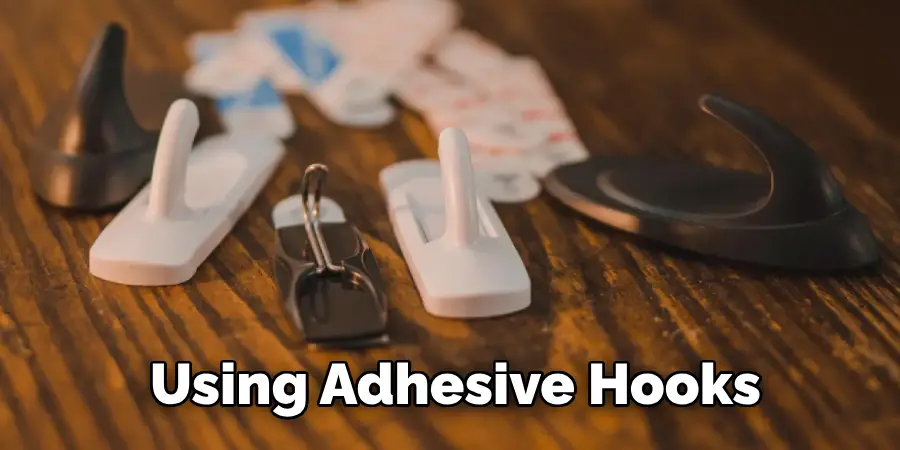
A4: If you are unable to find wall studs or prefer not to use brackets or cleats, there are alternative options such as using adhesive hooks or mounting the cabinets on a freestanding base. However, these methods may not provide as strong of a hold as traditional bracket and stud mounting. Overall, it is best to consult with a professional for the safest and most secure mounting solution.
Conclusion
Now you are ready to hang your cabinets without studs! With your newly acquired knowledge, embark on the journey of construction and design. Take comfort in knowing that the job is easier than it seems and millions of people have already completed it successfully.
Although hanging cabinets without studs may initially appear intimidating, take the initiative and dauntlessly pursue the task at hand. Be prepared for unexpected mishaps and twists along the way, as one building project often begets several related projects.
The lessons learned along this endeavor will be invaluable in all future projects so go forth confidently! If you take safety precautions and stay focused then you should be able to hang any cabinet in no time— enjoy a job well done! Thanks for reading this article on how to hang cabinets without studs.

